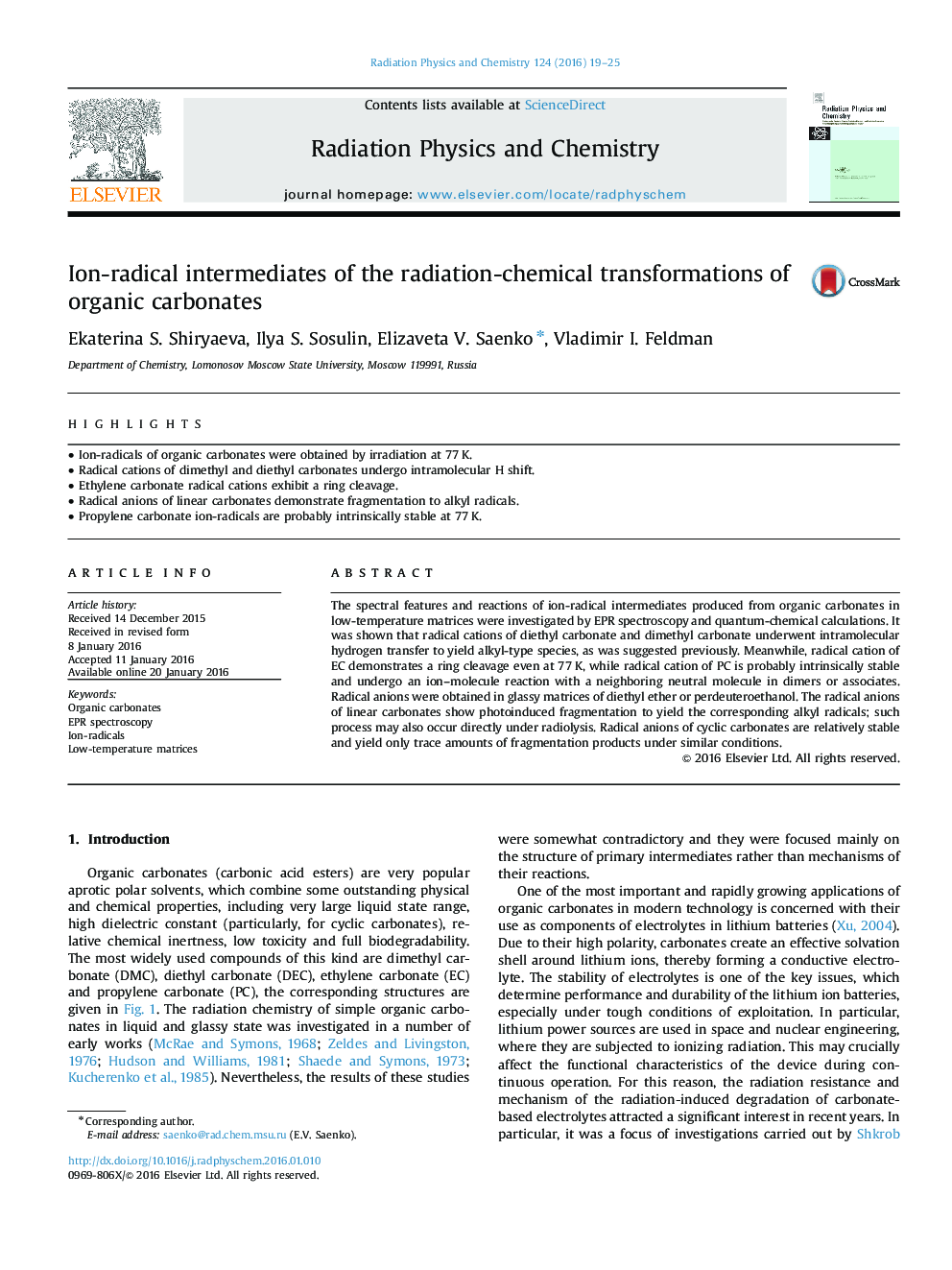| Article ID | Journal | Published Year | Pages | File Type |
|---|---|---|---|---|
| 1891012 | Radiation Physics and Chemistry | 2016 | 7 Pages |
•Ion-radicals of organic carbonates were obtained by irradiation at 77 K.•Radical cations of dimethyl and diethyl carbonates undergo intramolecular H shift.•Ethylene carbonate radical cations exhibit a ring cleavage.•Radical anions of linear carbonates demonstrate fragmentation to alkyl radicals.•Propylene carbonate ion-radicals are probably intrinsically stable at 77 K.
The spectral features and reactions of ion-radical intermediates produced from organic carbonates in low-temperature matrices were investigated by EPR spectroscopy and quantum-chemical calculations. It was shown that radical cations of diethyl carbonate and dimethyl carbonate underwent intramolecular hydrogen transfer to yield alkyl-type species, as was suggested previously. Meanwhile, radical cation of EC demonstrates a ring cleavage even at 77 K, while radical cation of PC is probably intrinsically stable and undergo an ion–molecule reaction with a neighboring neutral molecule in dimers or associates. Radical anions were obtained in glassy matrices of diethyl ether or perdeuteroethanol. The radical anions of linear carbonates show photoinduced fragmentation to yield the corresponding alkyl radicals; such process may also occur directly under radiolysis. Radical anions of cyclic carbonates are relatively stable and yield only trace amounts of fragmentation products under similar conditions.
